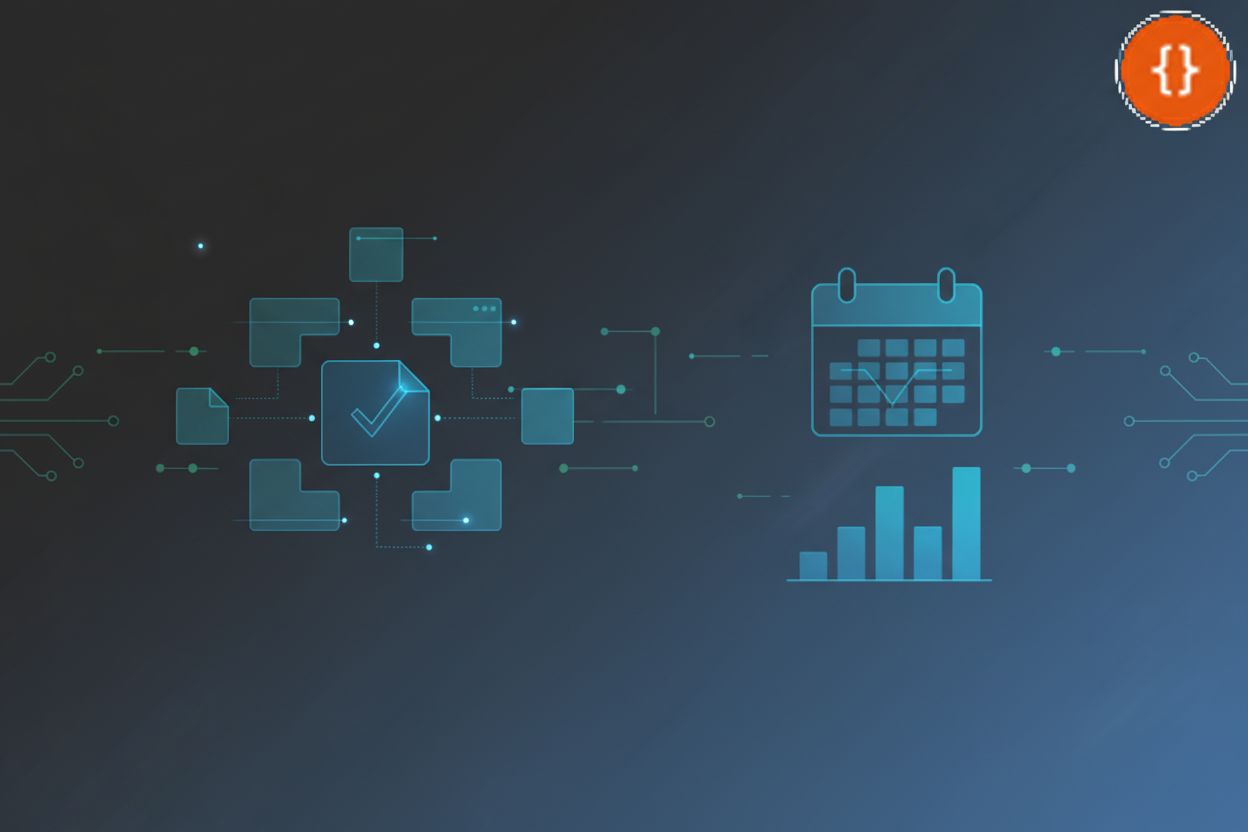Choosing the Best Approach for API Testing
TL;DR
Understanding the API Testing Landscape
Did you know that a single bug in an api can disrupt entire systems? That's why api testing is so important. Seriously.
Api testing, in a nutshell, is all about validating the functionality, reliability, and security of apis. An API (Application Programming Interface) is essentially a set of rules and protocols that allows different software applications to communicate with each other. Think of it as a messenger that takes requests from one application and delivers them to another, then brings the response back. It's not your typical user interface testing, no clicking around required. Instead, we're diving deep into message exchanges and data validation.
Api testing ensures that apis meet their specifications and handle various scenarios correctly. Think of it as a rigorous quality check for your api's brain.
This type of testing focuses on validating the business logic, security implementations, and data responses. Making sure everything works as expected before anyone else gets involved.
Honestly, skipping api testing is like building a house on a shaky foundation. You might get away with it for a bit, but eventually, things are gonna crumble.
Early bug detection is crucial; it reduces development costs and dramatically improves software quality. Finding a bug early is way cheaper than fixing it later.
Api testing ensures seamless integration between different systems and applications, which is especially critical in today's interconnected world.
It also addresses security vulnerabilities to protect sensitive data and prevent breaches. A 2025 report by The CTO Club highlights the growing importance of api security testing, noting that as data breaches become more common, companies are really prioritizing security from the start. This is especially relevant for APIs because they often handle sensitive data and represent a significant attack surface in modern applications.
Finally, it guarantees that apis can handle expected traffic and usage loads, ensuring a smooth user experience.
We'll explore different approaches to api testing, from manual methods to automated frameworks.
Key API Testing Approaches
Alright, let's dive into the nitty-gritty of api testing approaches. Ever think about how many things can go wrong when different systems try to talk to each other? It's a lot!
Contract testing is like having a prenuptial agreement for your apis. It verifies that apis stick to the agreed-upon contracts or schemas. Think of it as making sure both the provider and consumer of an api are on the same page about the data's structure and format.
Essentially, it ensures that the api provider delivers what the consumer expects, and vice versa. Tools like Pact and Spring Cloud Contract helps automate this process, making it less of a headache.
Imagine a healthcare app needing patient data from a hospital's system. Contract testing ensures the hospital's api sends the data in the format the app expects—no surprises.
The benefits? Faster feedback, fewer integration issues, and way better collaboration between teams. It's worth the effort.
End-to-end testing validates the entire api workflow, from the initial request to the final response. It's like simulating real-world scenarios to make sure everything works correctly in context. We're talking about validating the business logic, security implementations, and data responses.
For example, in a retail setting, an end-to-end test might simulate a customer placing an order, processing payment, and updating inventory.
Tools like Selenium and Cypress can be used for this, but honestly, choosing the right tool here can be tough. It's tough because both Selenium and Cypress are powerful but cater to slightly different needs and learning curves. For instance, Selenium is more established and supports a wider range of browsers and languages, making it versatile but potentially more complex to set up. Cypress, on the other hand, is known for its speed and ease of use, especially for front-end developers, but might have limitations in certain scenarios. Your team's existing programming language proficiency and comfort with specific testing paradigms will heavily influence which tool feels more natural and efficient. You need to consider your team's skillset too.
The payoff is comprehensive validation, spotting integration issues early, and a smoother user experience.
Performance testing evaluates the speed, stability, and scalability of apis under various load conditions. Its all about identifying bottlenecks and ensuring apis can handle the expected traffic. Gotta make sure it can handle the load right?
Consider a financial api that processes transactions. Performance testing would simulate a high volume of transactions to see how it handles the stress.
Tools like jmeter and gatling help simulate user traffic and measure response times. They're pretty crucial for any large-scale application.
The result? Improved api performance, a better user experience, and less risk of downtime.
Security testing identifies vulnerabilities in apis, like authentication flaws and data breaches. The goal is to make sure apis are protected against unauthorized access and malicious attacks. And you wanna do it right?
For instance, a social media api needs security testing to prevent unauthorized access to user accounts.
Tools like OWASP ZAP and sqlmap can be used for this, but remember, security is never a one-time thing.
The benefits are clear: enhanced api security, protection of sensitive data, and compliance with security standards.
AI-driven testing leverages artificial intelligence and machine learning to automate test case generation and execution. It helps spot potential issues that might be missed by traditional methods. Honestly, this is where things get really interesting.
- Imagine an e-commerce platform using ai to generate test cases for different user scenarios based on historical data. Tools like Appdiff and Parasoft Selenic use ai to improve testing efficiency and coverage. Appdiff, for instance, uses visual AI to detect UI changes and regressions, which can be applied to API testing by analyzing response payloads for unexpected structural or data variations. Parasoft Selenic leverages AI to automatically generate API tests from WSDL or OpenAPI specifications, and also uses AI to analyze application behavior and suggest relevant test cases. The CTO Club notes that ai is increasingly important for api testing, as it can analyze vast amounts of data to identify complex patterns and potential vulnerabilities that manual testing might overlook.
The advantages? Increased test coverage, less manual work, and faster feedback cycles.
Looking for a completely free way to test your rest apis? APIFiddler provides ai-powered tools for rest api testing, performance analysis, security scanning, and documentation generation. It can be integrated into your workflow to enhance various testing approaches. APIFiddler appears to be a comprehensive platform or suite of tools rather than a single standalone tool, aiming to cover multiple aspects of API testing, from functional validation to performance and security.
- You can get instant insights without registration.
- Features include free api endpoint testing, performance & load testing, and api security analysis.
- There are tools for api performance analysis, security scanning, and documentation generation.
So, what does all this mean for you? Choose the right approach, and you'll be well on your way to building robust, reliable, and secure apis. The key is to understand your specific needs and pick the tools that fit best.
Now that we've covered the main approaches, let's talk about the factors influencing your choice.
Factors Influencing Your Choice of Approach
Alright, so you're thinking about diving into api testing? Smart move. But with so many approaches out there, how do you pick the right one? Well, let's break down the key factors that'll influence your choice.
First things first, what are you actually trying to achieve with your api? It's not just about making sure it works, but how it works under different conditions. Thinking about the specific needs and goals will definitely steer you in the right direction.
- If you're dealing with a critical system, like say, a hospital's patient record api, you cannot skimp on end-to-end and security testing. We're talking lives here, people! You need to make sure patient data is rock-solid and stays put.
- Got a api that's gonna be hammered with traffic? Think a Black Friday sales api for a major retailer. Then performance and load testing become your best friends for making sure it can actually handle the pressure.
- And hey, if your api is playing nice with a whole bunch of different systems – like a financial api integrating with various banking services – contract testing can be a lifesaver for keeping things consistent.
Let's be real: your api testing approach is only as good as the team wielding it. So, you gotta choose an approach that lines up with your team's existing skillset. Don't try to force-fit something that's gonna leave everyone scratching their heads.
- If your team are Java wizards, then using rest assured might feel like slipping on a comfy pair of shoes. It's a Java library, familiar, powerful, and built for Java. Its fluent API makes writing HTTP requests and asserting responses feel very natural for Java developers, integrating smoothly with common Java testing frameworks like JUnit or TestNG.
- If you've got some ai gurus on board, maybe it's time to dip your toes into ai-driven testing tools. Let those algorithms do some heavy lifting.
- But whatever you do, don't just throw tools at people and expect magic. Provide training and support to get everyone up to speed. A little investment here goes a long way.
Money talks, right? You gotta balance the cost of testing tools and resources with the value they bring. It's not always about grabbing the shiniest, most expensive thing on the market.
- Open-source tools like jmeter and karate dsl can be seriously cost-effective, especially for smaller teams or projects.
- Cloud-based testing platforms can offer some flexible pricing, so you only pay for what you use.
- And don't forget the big picture: early bug detection saves tons of money down the road. It's an investment, not just an expense.
You want your api testing to slide right into your existing development process.
- Integration with CI/CD: If your team already has a robust CI/CD pipeline, you'll want to choose an approach that integrates seamlessly. Automating tests within your pipeline ensures continuous feedback, which is crucial for agile development.
- Team Collaboration: Fostering collaboration between developers and testers is key. An approach that encourages shared understanding and communication, like contract testing, can significantly improve efficiency.
Choosing the right api testing approach ain't exactly rocket science, but it does need some careful thought. It's about understanding your project's needs, your team's strengths, and your budget realities.
Best Practices for Effective API Testing
Alright, so you wanna make sure your api testing is actually effective? It's not enough to just do it, you gotta do it right. Otherwise, you're just wasting time, y'know?
Look, nobody loves running the same tests over and over, right? That's why automation is king. Automate those repetitive tasks to actually save time and reduce the manual effort.
Use scripting languages like Python or JavaScript, and testing frameworks like pytest or mocha to create automated tests. For example, a Python script using
requestsandpytestmight look like this:import requests import pytestdef test_get_users(): response = requests.get("https://api.example.com/users") assert response.status_code == 200 assert isinstance(response.json(), list)
Trust me; your future self will thank you.
Schedule automated tests to run regularly as part of your ci/cd pipeline. This way, you catch issues early and often, instead of waiting for a nasty surprise down the road.
You can't test everything all the time. It's just not realistic, and honestly, not the best use of your time. Better to prioritize, and test the important stuff first.
- Focus on testing critical apis and workflows first. What's gonna cause the biggest headache if it breaks? Test that.
- Use risk-based testing to prioritize test cases based on the likelihood and impact of failures. What's most likely to break, and what's the worst-case scenario if it does? That's what you test first.
- Regularly review and update test cases to ensure they remain relevant and effective. Things change, apis evolve, and your tests need to keep with the times.
Sometimes, you need to isolate your api to really test it properly. That's where mocking and stubbing come in. It sounds complicated, but it's not too bad.
- Mock external dependencies to isolate apis and simplify testing. Don't let other systems mess up your tests.
- Create stubs to simulate api responses when real apis are unavailable. Can't connect to the database? No problem, just use a stub.
- Use mocking and stubbing to test edge cases and error conditions. For example, you can mock a downstream service to return a 500 error, or stub an api to accept a malformed request, to see how your api handles these scenarios gracefully. A malformed request could be something like sending a JSON payload with missing required fields, incorrect data types (e.g., sending a string where a number is expected), or an invalid JSON structure altogether.
Testing isn't a "one and done" kinda deal. You need to keep monitoring your api's performance to make sure it's still running smoothly.
- Track api response times, error rates, and resource utilization. How fast is it? Is it crashing? Is it hogging resources?
- Set up alerts to notify you of performance issues. You don't wanna find out about a problem from your ceo, right?
- Use monitoring tools to identify and resolve bottlenecks. Find out what's slowing things down and fix it.
Following these best practices can seriously improve the effectiveness of your api testing. You'll catch more bugs earlier, improve performance, and generally make your life easier.
Next up, let's talk about the future of api testing.
The Future of API Testing
Alright, let's talk about what the future holds for api testing. It's not just about fixing bugs anymore, it's about staying ahead in a constantly evolving tech landscape, y'know?
To stay ahead, it's important to consider future trends in api testing.
AI and machine learning are becoming increasingly important in api testing. Imagine ai generating test cases based on historical data, making testing way more efficient. For instance, ai could analyze server logs to identify common user interaction patterns or frequently occurring error scenarios, and then automatically generate test cases to cover those specific paths.
There's a bigger emphasis on security testing and compliance. With data breaches becoming more frequent, companies are prioritizing security from the get-go. This is especially critical for APIs because they often serve as the primary interface to sensitive data and can be a major entry point for attackers. Evolving regulatory requirements also mean that robust security testing is non-negotiable.
Serverless architectures and microservices are changing the game. Testing these distributed systems requires new strategies to ensure reliable communication between services. This is challenging because you're not just testing one application, but a network of interconnected services, requiring techniques like distributed tracing to follow requests across multiple services, and service virtualization to simulate dependencies.
Integration with devops and agile practices is essential. Automating testing as part of the ci/cd pipeline ensures continuous feedback and faster release cycles.
Stay updated with the latest testing tools and techniques. Things are changing so fast, so continuous learning is crucial.
Invest in training and development to enhance your team's skills. Make sure your team is equipped to handle new challenges and technologies.
Embrace automation and ai to improve testing efficiency and coverage. Let the machines do the heavy lifting so you can focus on the complex stuff.
Foster a culture of quality and continuous improvement. Make testing an integral part of your development process, not just an afterthought.
The future of api testing is all about adapting to change and embracing new technologies. By staying ahead of the curve and investing in your team, you can ensure your apis are robust, reliable, and secure. And you'll be ready for whatever comes next.











